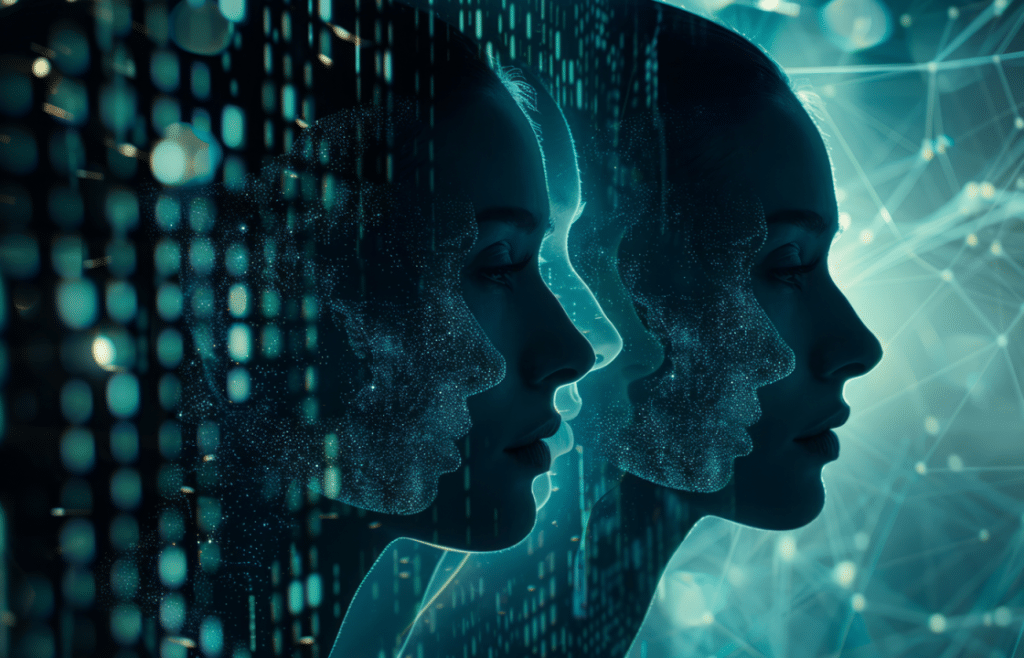In the rapidly evolving landscape of digital media, one of the most intriguing and alarming developments is the rise of deepfakes. These sophisticated, AI-generated videos and images that can make it appear as though people are saying or doing things they never actually did have sparked widespread concern and fascination. As technology progresses, we might soon encounter “truefakes” – more advanced and indistinguishable fabrications. This article delves into the journey from deepfakes to truefakes, exploring the implications for society, and suggesting ways to navigate this brave new world.
Understanding Deepfakes
Deepfakes are created using deep learning techniques, particularly generative adversarial networks (GANs). These systems can analyze and replicate facial movements, speech patterns, and other personal characteristics with startling accuracy. Initially popularized through entertainment and novelty applications, deepfakes have quickly revealed their potential for misuse in political propaganda, misinformation campaigns, and personal attacks.
Real-World Examples of Deepfakes
- Political Manipulation: In 2018, a deepfake video of former U.S. President Barack Obama, created by comedian Jordan Peele, showcased the technology’s potential for political manipulation. While intended as a warning, it underscored how convincingly deepfakes can alter reality.
- Celebrity Scandals: Numerous deepfake videos featuring celebrities in compromising scenarios have circulated online, highlighting the technology’s potential for defamation and privacy invasion.
- Corporate Risks: Deepfakes have been used to impersonate CEOs in scam calls to defraud companies. In one notable case, a British energy firm’s CEO was mimicked in a voice phishing (vishing) attack, leading to a fraudulent transfer of €220,000.
The Evolution to TrueFakes
As AI and machine learning technologies advance, we may soon see the emergence of “truefakes.” These would be even more sophisticated than current deepfakes, potentially indistinguishable from real footage to both the human eye and advanced detection systems.
Characteristics of TrueFakes:
- High Fidelity: Truefakes will likely achieve unprecedented levels of detail and realism, making them virtually impossible to distinguish from genuine videos and images.
- Real-Time Generation: Future iterations could generate deepfakes in real-time, enabling seamless manipulation of live broadcasts and video calls.
- Enhanced Audio Fabrication: Beyond visuals, truefakes will include highly accurate audio synthesis, perfectly replicating an individual’s voice, tone, and inflections.
Implications for Society
The rise of deepfakes and the potential emergence of truefakes pose significant challenges across various domains:
Personal Privacy and Security: Deepfakes threaten individual privacy, as anyone’s likeness can be exploited without consent. This has already led to cases of deepfake pornography, where people’s faces are superimposed onto explicit videos. Truefakes would exacerbate these issues, making it even harder to protect personal identity.
Political and Social Stability: Deepfakes can undermine trust in media and public figures, destabilizing political systems and eroding democratic processes. Truefakes, with their enhanced realism, could manipulate public opinion and electoral outcomes more effectively than ever before.
Legal and Ethical Considerations: The legal system is struggling to keep pace with the rapid development of deepfake technology. Current laws may be inadequate to address the nuances of truefakes, necessitating new regulations and ethical frameworks to safeguard against misuse.
Strategies for Mitigation
While the threat of deepfakes and truefakes is daunting, several strategies can help mitigate their impact:
Technological Solutions:
- Detection Algorithms: Investing in advanced detection tools that can identify deepfakes and truefakes is crucial. Companies like Facebook and Microsoft are already working on such technologies.
- Blockchain Verification: Implementing blockchain technology to verify the authenticity of digital content can help ensure that videos and images are not tampered with.
Legal and Regulatory Measures:
- Strengthening Legislation: Governments need to update laws to address the specific challenges posed by deepfakes and truefakes, including stricter penalties for malicious use.
- International Cooperation: As deepfake technology crosses borders, international cooperation is essential to develop comprehensive strategies and share best practices.
Public Awareness and Education:
- Media Literacy: Educating the public about the existence and risks of deepfakes is crucial. Enhancing media literacy can help individuals critically evaluate the authenticity of digital content.
- Transparency and Accountability: Encouraging platforms and creators to be transparent about the origins and editing of content can build trust and accountability.
The journey from deepfakes to truefakes is a significant technological evolution that carries both potential benefits and substantial risks. As individuals, businesses, and governments, we must act now to prepare for this future.
- For Individuals: Stay informed about the latest developments in deepfake technology and enhance your media literacy. Be critical of the content you consume and share, and support policies and technologies that promote transparency and accountability.
- For Businesses: Invest in technologies to detect and combat deepfakes, and establish clear policies for content verification and authenticity. Collaborate with industry partners to develop standards and best practices.
- For Governments: Update legal frameworks to address the challenges posed by deepfakes and truefakes. Promote international cooperation and invest in public education campaigns to raise awareness about these technologies.
By working together, we can navigate the complexities of deepfakes and truefakes, ensuring that technological advancements serve to enhance, rather than undermine, our society.
